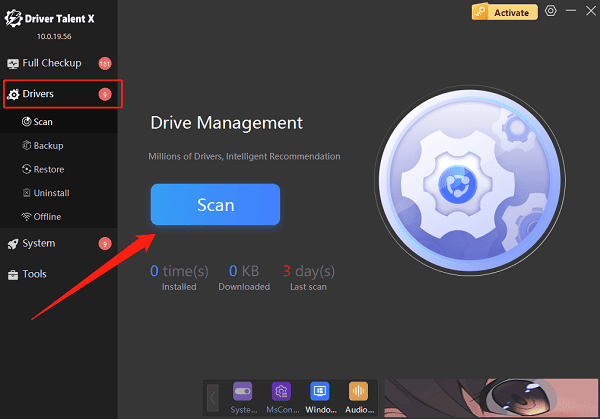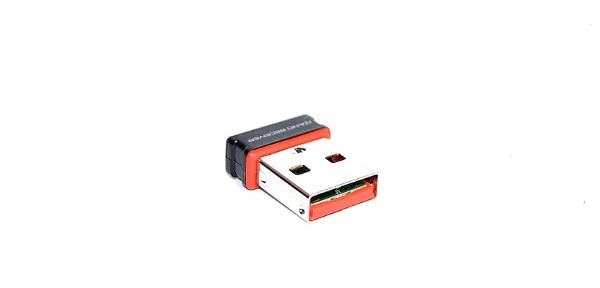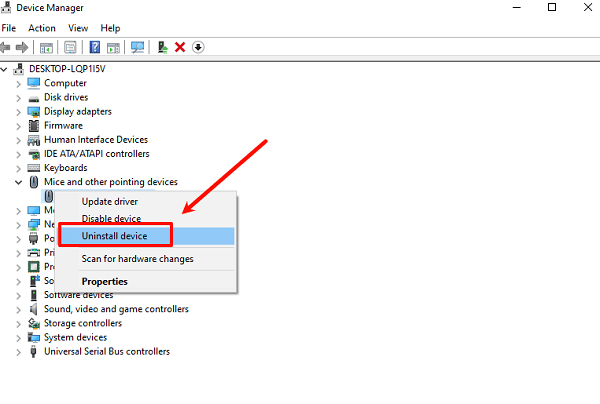Due to its portability and tangle-free design, the wireless mouse has become a popular peripheral for many Windows users.
However, during everyday use, many users may suddenly find their wireless mouse unresponsive—unable to move, with a frozen cursor, or not recognized by the system—severely affecting productivity and user experience.
This article will thoroughly explain the common reasons why a wireless mouse may stop working and provide 8 practical solutions to help you quickly restore its normal functionality.
Common Reasons Why a Wireless Mouse Doesn't Work
Low battery or poor battery contact
Mouse driver not installed or corrupted
USB receiver not properly connected or damaged
Incorrect Windows system settings
Improper Bluetooth pairing (for Bluetooth mouse)
Signal interference from nearby devices
Conflicts from system updates or patches
Hardware failure
8 Fixes for a Non-Working Wireless Mouse
Fix 1: Check Mouse Battery Status
Replace with a fresh set of batteries.
For rechargeable mouse, ensure it is fully charged.
Reinsert the batteries to confirm proper contact.
Check if the mouse indicator light is working properly.
Fix 2: Update the Mouse Driver
Outdated or corrupted drivers are one of the most common causes of wireless mouse issues. Using Driver Talent X is recommended to save time and avoid the risk of downloading or installing the wrong drivers.
Click the download button to get the latest version of Driver Talent X, install and launch the software.
Go to the Drivers tab and select "Scan" to automatically detect all driver statuses.

Locate the mouse driver in the scan results and click "Upgrade".
Restart your computer to apply the updated driver.
Fix 3: Replug the USB Receiver
Remove the USB receiver from the current port.
Plug it into a different USB port (preferably a rear port on the motherboard).

Wait a few minutes to see if the mouse starts working.
If multiple USB peripherals are connected, try unplugging other devices to avoid conflicts.
Fix 4: Check Bluetooth Settings (for Bluetooth mouse)
Press Win + I to open Settings > Devices > Bluetooth & devices.
Ensure Bluetooth is turned on.
Remove the previously connected mouse from the list and re-pair it.

Follow the on-screen instructions to complete the pairing process.
Tip: Make sure the Bluetooth mouse is in pairing mode, which usually requires holding the power button for several seconds.
Fix 5: Restart the Computer or Try Another Device
Restarting the computer may reload the USB device drivers properly.
Plug the wireless mouse into another computer to check if the issue is hardware-related.
Fix 6: Enable the HID Service
Press Win + R, type "services.msc", and press Enter.
Locate and double-click "HID Input" Service.
Set the startup type to "Automatic", then click "Start".
Click "Apply" and "OK" to save and exit.
Fix 7: Uninstall and Re-detect the Device
Open Device Manager.
Find "Mice and other pointing devices", right-click the mouse, and select "Uninstall device".

Unplug the USB receiver, wait a few minutes, then reinsert it.
Windows will automatically reinstall the driver.
Fix 8: Check for Windows Updates and Security Software Conflicts
Check if any new Windows updates were recently installed.
Try uninstalling suspicious patches or restoring the system to a previous restore point when the mouse worked properly.
Temporarily disable any security software and test whether the mouse works again.
Additional Tips
Clean the bottom of the mouse regularly to ensure the laser sensor is not blocked by dust.
Use a mouse pad to improve tracking accuracy.
Avoid using the wireless mouse on glass or reflective surfaces.
If the mouse remains unresponsive for a long time, consider replacing it or contacting the manufacturer for support.
A wireless mouse not working in Windows is a common but fixable issue. Whether the problem lies in the battery, power, driver, or system settings, you can systematically troubleshoot it using the 8 methods above.
It's recommended to start with Driver Talent X to update the drivers. Combined with system tweaks and settings adjustments, most users can quickly restore their wireless mouse functionality.
